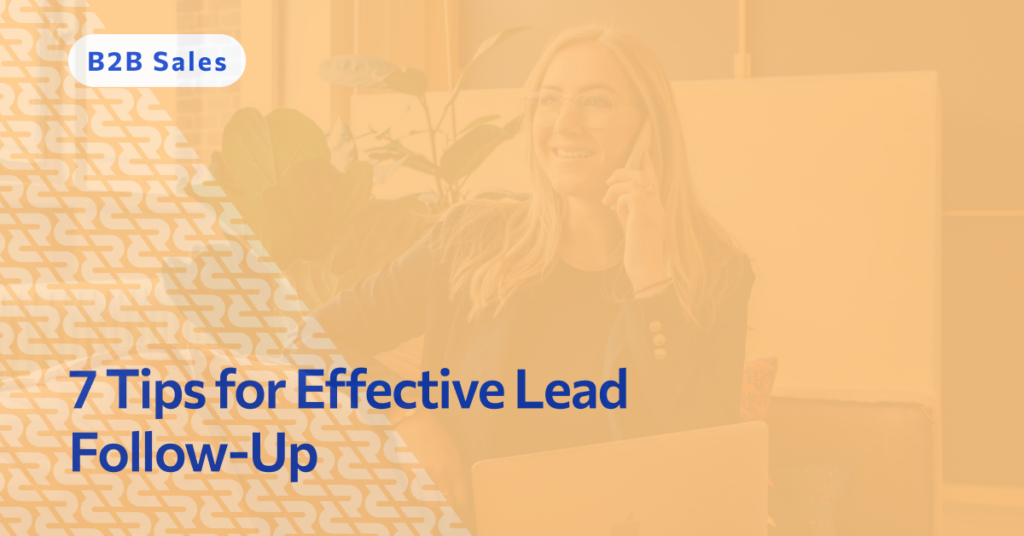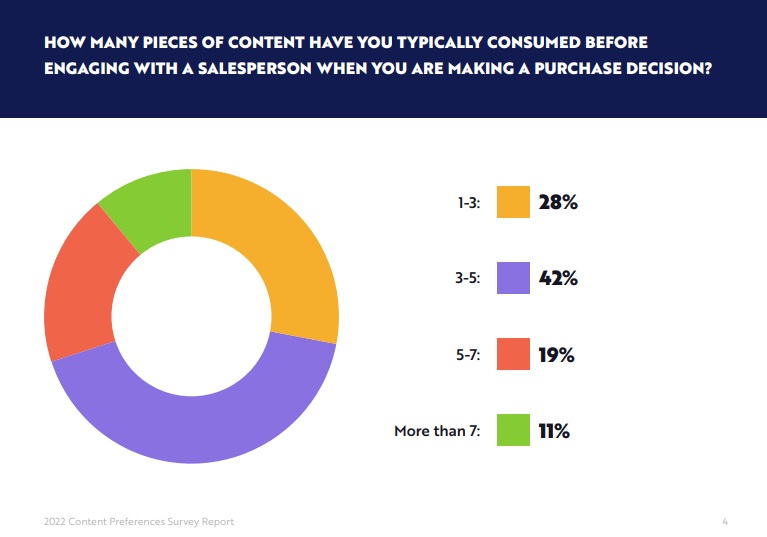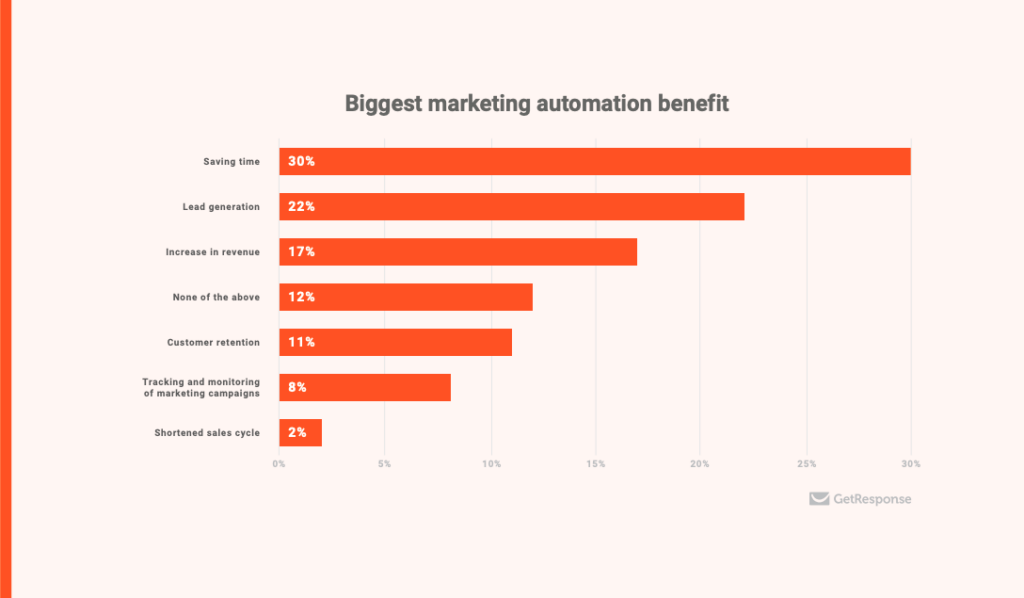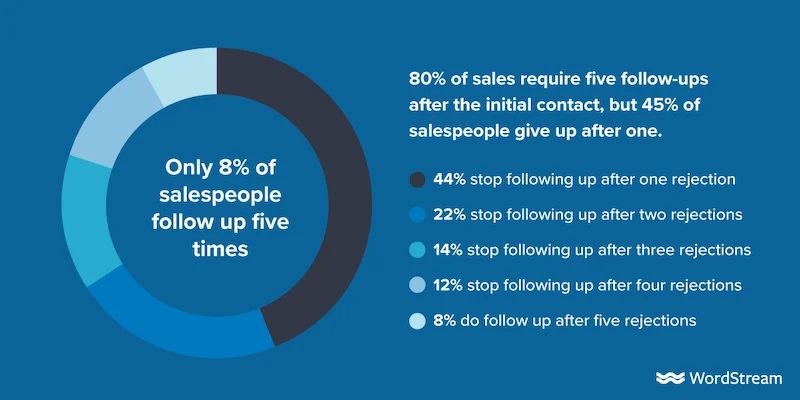7 Tips for Effective Lead Follow-Up

It’s impossible to earn new customers without lead follow-up. B2B buyers, in particular, require multiple interactions with sales teams across every stage of the buyer journey (and different kinds of information at every stage, to boot). It can be complicated to manage, and companies need the right processes and tools in place to ensure nothing falls through the cracks.
That’s what we’re going to break down in this article. We’ll cover:
- How to prioritize leads effectively
- Striking a balance between standardization and personalization
- Leveraging content to engage leads
- How automation can save you time and money
- Why multichannel efforts work best
- How persistence is a powerful competitive advantage
Let’s get started!
Quick Takeaways
- Lead scoring enables salespeople to identify and focus on the highest-potential leads.
- Content is a key part of B2B lead follow-up — on average, buyers interact with 3+ pieces of content before making a purchase decision.
- Personalization is a common B2B buyer expectation, and lead follow-up should be (at least partly) tailored to each individual lead.
- Automating lead follow-up saves time and money, and marketing and sales software solutions make it easy to execute.
- Lead follow-up strategies should include multiple communication channels (email, phone calls, text, etc.).
- Most leads require more than 5 follow-ups before they convert, but only 8% of sales reps actually follow up that many times.
7 Tips for Effective Lead Follow-Up
Prioritize with lead scoring
Not all leads are created equal, and you can optimize your marketing and sales team’s time by focusing first on the leads most likely to convert. The way to identify them is through lead scoring, or using a points system based on lead behavior and how well they align with your ICPs and buyer personas.
Specific lead scoring models should be unique to your business and customer, but companies use common criteria such as: professional traits (job role, title, etc.), demographics (like age, gender, location), online activities (ex: website visit, click through on email) and source (i.e. a direct referral vs. lead magnet download).
To build the right lead scoring model for your company, you need to know your ideal customer well and build scoring into your sales process. Most CRM and sales management software tools have automated lead scoring capabilities that make this easy.
Include high-value content
Content is an essential part of lead engagement. Research shows that nearly three-quarters (70%) of B2B buyers engage with 3+ pieces of content before they make a purchase decision. In other words: sharing high-value content could make the difference between a lead choosing your company or a competitor.

Email is the most direct and effective way to share content as part of your lead follow-up strategy. Downloadable lead magnets (think ebooks, whitepapers, or guides), videos, blog posts, and infographics can all be included either in the email body or as an attachment.
The benefits of content are manifold: it demonstrates expertise, helps potential customers solve problems or execute important tasks, builds buyer knowledge, and showcases your company’s ability to deliver value.
Personalize communications
Personalization in business communication is pretty much an expectation in the B2B world — and not just through auto-fill first names in subject lines. Today’s B2B buyers want experiences totally tailored to their needs and preferences.
When it comes to lead follow-up, a strong personalization strategy can be what sets you apart from competitors. Personalization is an early indicator that your company cares about each customer individually, and that your products and services will also be designed to solve your client’s unique challenges.
Ways to effectively add personalization to your lead follow-up include:
- Custom-created prospecting videos
- Discussing value as it relates to your lead’s unique business situation
- Sharing content specifically relevant to each lead
Standardize the process
While your lead follow-up strategy does need to maintain some flexibility to align with client needs, it’s important to have standard steps built into your marketing and sales processes.
For example, you might create a lead nurturing email campaign that new leads receive after showing initial interest. You may send a personalized video follow-up after every consultation or demo. These steps can still be customized, but building them into your sales process creates consistency and a consistent baseline for measuring sales performance.
Automate as much as possible
Automation is a huge time saver and can be done in ways that still keep your lead follow-up strategy personalized. Automating welcome messages, email campaigns, follow-up messages, and meeting reminders (etc.) keep your follow-up process on track and ensure there are no unintentional gaps in communication.
In addition to time savings (the top benefit as reported by marketing professionals), automation has also proven to improve lead generation efforts, earn companies more revenue, and shorten the sales cycle.

Use multiple channels
Email is a big part of lead follow-up and business communication in general, but it shouldn’t be the only channel you utilize. Phone calls, text messages, and (depending on your business) in-person meetings are all effective ways to engage leads, build a relationship, and keep them moving along the pipeline.
Decide where you’ll utilize each communication channel in your lead follow-up strategy, and adjust as needed based on lead preferences.
Be consistent and persistent
Leads require several follow-ups before they get to a purchase decision, but most sales teams aren’t staying persistent enough to close the deal. While 80% of sales prospects don’t say yes until the fifth (or more) outreach, a measly 8% actually follow up that many times.

This presents an opportunity, of course, for those that do. Train your sales team to not get discouraged and give up after the first few lead follow-up communications. Be consistent across leads and persistent in your outreach, and you can expect more leads to close.
Putting it All Together
Lead follow-up is all about striking the right balance: enough standardization and automation to optimize execution, while building in flexibility to meet each lead’s unique needs. Fortunately, B2B marketing and sales software solutions enable these capabilities and allow your sales reps to save time while improving business results.
Revboss’s outbound email software and lead generation services are custom-built for startups, consultancies, marketing agencies, and other B2B organizations.
Schedule a quick call with us and find out how we can help you win more clients.
